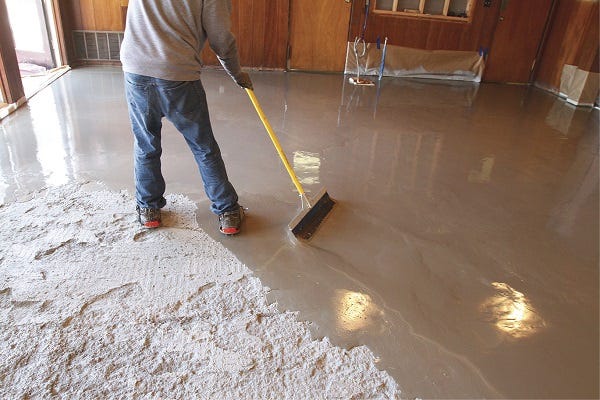Floor Self-Leveling The Perfect Foundation for a Smooth and Durable Finish

When it comes to achieving a flawless and durable floor, preparation is key. One of the most effective techniques to ensure an even surface is floor self-leveling. Whether you are working with concrete, tiles, vinyl, or hardwood, self-leveling compounds provide a perfect base, making installation easier and extending the lifespan of your flooring.
What is Floor Self-Leveling?
Floor self-leveling is a process that involves applying a specially formulated compound over an existing subfloor to create a smooth, even, and flat surface. These compounds are typically cement-based and flow easily, allowing them to settle and level out naturally without extensive manual effort. Once applied, they harden into a strong and stable layer, ready for the final flooring material.
Why is Floor Self-Leveling Important?
An uneven floor can cause multiple issues, including:
Visible imperfections after the final flooring is installed.
Cracks and damages due to pressure points.
Difficulty in installation for certain flooring types like vinyl or laminate.
By using a self-leveling compound, you eliminate these problems and ensure your flooring looks and performs at its best.
Types of Self-Leveling Compounds
There are two main types of self-leveling compounds:
Cement-Based Self-Levelers
Ideal for both interior and exterior applications, these compounds are strong, quick-setting, and suitable for almost all flooring types.
Gypsum-Based Self-Levelers
Best for indoor applications, particularly over timber subfloors. They provide excellent smoothness and are often used in residential projects.
Step-by-Step Process of Floor Self-Leveling
Surface Preparation — Clean the floor thoroughly, removing dust, grease, or loose particles. Fill large cracks or holes.
Priming — Apply a suitable primer to enhance bonding between the subfloor and the self-leveling compound.
Mixing — Follow the manufacturer’s instructions to mix the compound with water to achieve a smooth, lump-free consistency.
Pouring and Spreading — Pour the mixture onto the floor and use a spreader or gauge rake to assist the leveling process.
Drying Time — Allow the compound to cure fully before installing the final flooring. Drying times vary based on thickness and material type.
Advantages of Using Self-Leveling Compounds
Fast and Efficient — Levels floors within hours, reducing project time.
Versatile — Suitable for concrete, wood, and tiled surfaces.
Durable Base — Creates a strong, crack-resistant foundation.
Professional Finish — Delivers a perfectly even surface for your final flooring.
Final Thoughts
Whether you are renovating your home, preparing a commercial space, or working on a new build, floor self-leveling Qatar is a crucial step to achieving a long-lasting, professional finish. Investing in a good-quality self-leveling compound ensures your flooring not only looks great but also stands the test of time. With the right preparation and application, your floors will be smooth, strong, and ready to impress.
Comments
Post a Comment